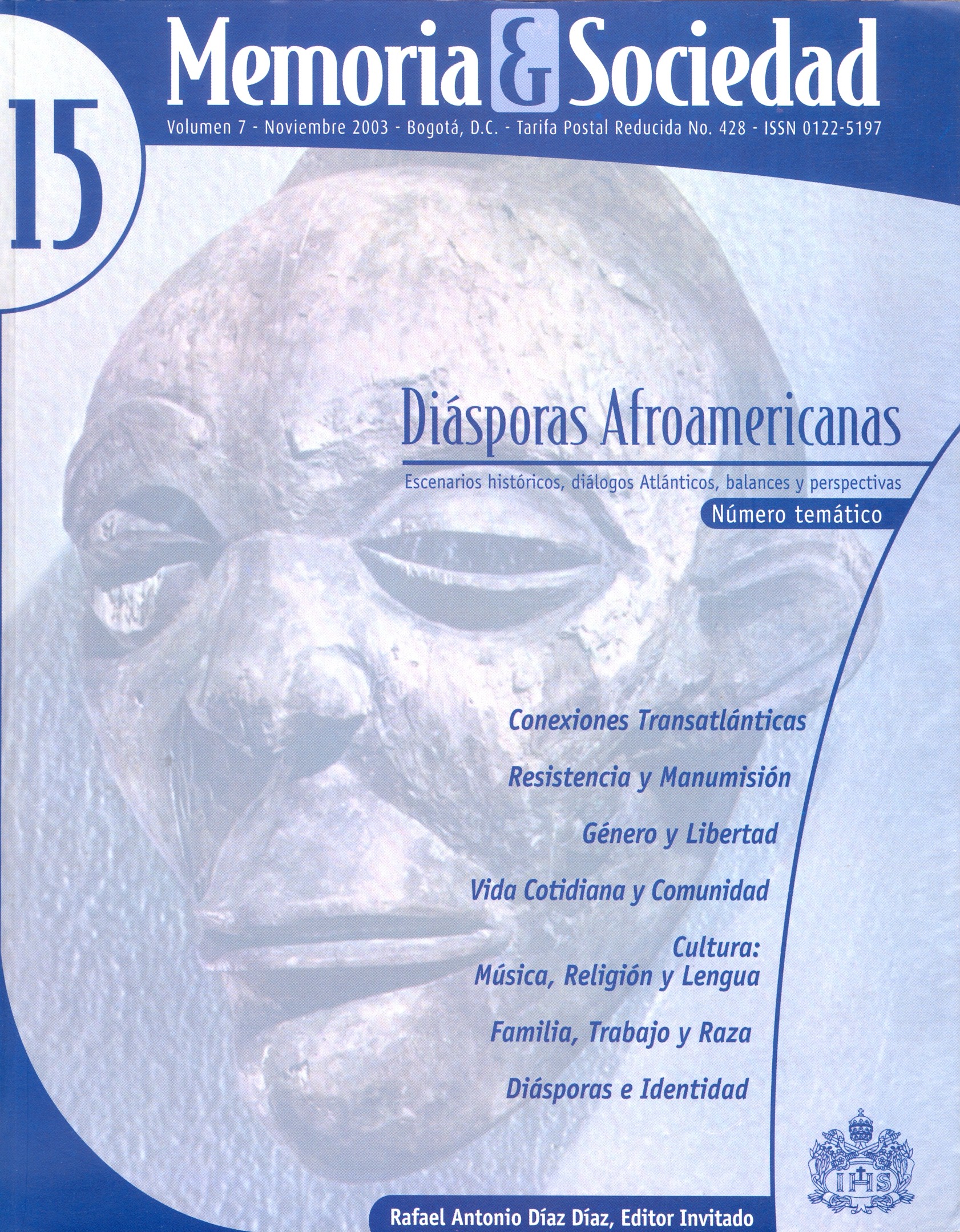Resumen
En el siglo XIX un grupo compuesto en su mayoría por afro-jamaiquinos se estableció en la costa Caribe de Costa Rica, un país de habla hispana. Dicha comunidad debía trabajar para Minor C. Keith un ingeniero estadounidense que había sido comisionado por el gobierno costarricense para construir un ferrocarril que uniese un puerto del este con la capital del Valle Central, San José. Para financiar su empresa Keith fundó la United Fruit Company y los trabajadores jamaiquinos permanecieron en la provincia de Limón para plantar bananos. El lenguaje creole de los empleados, basado en el inglés, sobrevivió, a pesar de los esfuerzos del gobierno por erradicarlo, principalmente porque actúa, entre otros elementos, como una marca de identidad para quienes lo hablan. Pero ¿sobrevivirá a la globalización? Y si es así, ¿por cuánto tiempo?La revista Memoria y Sociedad se encuentra registrada bajo la licencia Creative Commons Reconocimiento 4.0 Internacional. Por lo tanto, esta obra se puede reproducir, distribuir y comunicar públicamente en formato digital, siempre que se reconozca el nombre de los autores y a la Pontificia Universidad Javeriana. Se permite citar, adaptar, transformar, autoarchivar, republicar y crear a partir del material, para cualquier finalidad (incluso comercial), siempre que se reconozca adecuadamente la autoría, se proporcione un enlace a la obra original y se indique si se han realizado cambios. La Pontificia Universidad Javeriana no retiene los derechos sobre las obras publicadas y los contenidos son responsabilidad exclusiva de los autores, quienes conservan sus derechos morales, intelectuales, de privacidad y publicidad.
El aval sobre la intervención de la obra (revisión, corrección de estilo, traducción, diagramación) y su posterior divulgación se otorga mediante una licencia de uso y no a través de una cesión de derechos, lo que representa que la revista y la Pontificia Universidad Javeriana se eximen de cualquier responsabilidad que se pueda derivar de una mala práctica ética por parte de los autores. En consecuencia de la protección brindada por la licencia de uso, la revista no se encuentra en la obligación de publicar retractaciones o modificar la información ya publicada, a no ser que la errata surja del proceso de gestión editorial. La publicación de contenidos en esta revista no representa regalías para los contribuyentes.


